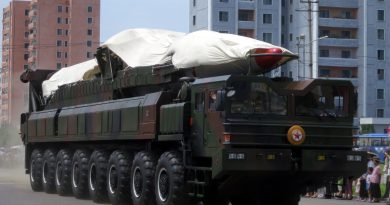Sri Lanka: For Democracy or for Worse
By Joaquin Matamis
Staff Writer
In the month of November, Sri Lanka has experienced many watershed moments in its ongoing political tumult. Al Jazeera reports that President Maithripala Sirisena abruptly dismissed Prime Minister Ranil Wickremesinghe from office and inserted former leader Mahinda Rajapaksa in his place.
Amidst numerous controversies, Rajapaksa’s appointment was met with negative reception and protest in the name of democratic preservation. With a seemingly unilateral government under Sirisena on the rise, the competition power raises many questions for the region’s future.
Sri Lanka is the oldest democracy in Asia, established under the British Empire in 1931. Its governmental system is a semi-presidential republic, which consists of an executive president and a separate government head chosen by the president. The most powerful seats in the country are the president, prime minister, legislative parliament, and an independent judiciary. The seats of power in Sri Lanka are the president, prime minister, legislative parliament, and independent judiciary. They are decided by a multi-party system with two dominating parties: the center-leftist United People’s Freedom Alliance (UPFA) and the right-wing capitalist United National Party (UNP), headed by Maithripala Sirisena and Ranil Wickremesinghe respectively.
India Today reports that in 2015, Sirisena and Wickremesinghe joined a political alliance to take down Mahinda Rajapaksa, Sri Lanka’s longtime president since 2005. His ten-year presidency was riddled with controversies like nepotism, manipulation of media, and the unlawful slaughter of ethnic minority Tamil citizens during the Sri Lankan civil war. The alliance promised to bring a newfound unity to Sri Lanka through political and constitutional reforms and support for the Tamil minority. However, political differences splintered the alliance and, as the government grew more divisive, the alliance’s original agenda and promises remained unfulfilled.
While President Sirisena maintains most of the power in the sea of government, Wickremesinghe and his party hold 118 of the 225 seats in parliament. The division of power has remained relatively stable until now.
On October 26, President Sirisena made a public television announcement that dismissed Wickremesinghe as prime minister, reports the New York Times. Later that evening, Rajapaksa’s swearing-in ceremony was broadcasted with celebrations on screen, but growing conflict on the streets. As mass protests began on the streets of Colombo, Sri Lanka’s capital, Wickremesinghe remained in the prime minister’s suite, maintaining his previous position. Wickremesinghe publicly announced his surviving prime ministry the following day, reports BBC News.
Throughout the week, Sirisena justified his actions with mentions of Wickremesinghe and his alleged involvement in a presidential assassination attempt, though these allegations are wholly unfounded, reports Reuters. Parliament decreed the president’s actions as “a gross violation of the constitution.” Finance minister Mangala Samaraweera named Sirisena’s maneuver “an anti-democratic coup,” reports an additional source from the New York Times.
With increased tensions from the civilian population and the incompliance of parliament, Sirisena attempted to dissolve parliament on November 9 and called for a snap election set for January, reports Channel News Asia. However, Sirisena’s actions were again determined unconstitutional, and his motions to dissolve parliament were blocked by the Sri Lankan Supreme Court.
Today, parliament continues to maintain the delicate balance of democracy. A majority of parliament has twice deemed Rajapaksa’s appointment unconstitutional through no-confidence motions. With the wheels of government at a halt, even parliament has resorted to physical force.
As of Thursday, November 15, the Sri Lankan parliament has become a physical arena, with representatives of every party involved in fistfights and other physical altercations, reports The Guardian. Reports from the Washington Post even mention one member brandishing a knife. On Friday, November 16, the fighting continued. Parliamentarians have resorted to throwing chairs and even chili powder to sabotage the hearings.
Admittedly, not much can be said for Sri Lanka’s coming days. The political balance and stability of the country are teetering on the edge of collapse. With two contesting prime ministers and an increasingly despotic president on the rise, the need for outside intervention is critical to Sri Lanka’s preservation. However, Sri Lankan relations with India remain weak, and China currently sits in a bid for influence over the Sri Lankan economy, reports Forbes. Only one thing is certain: inside Sri Lanka, the fight for democracy remains strong.


